Related Research Articles

The Antonov An-38 is a stretched and upgraded version of Antonov's earlier An-28. It is a twin-engined turboprop transport aircraft, designed by the Antonov Design Bureau in Kyiv, Ukraine. Production is in Novosibirsk, Russia, but some crucial parts are also made in Ukraine and Belarus. It first flew in 1994, and received international flight certification in April 2000. A total of 11 were built and 2 remain in airline service as of August 2019. A recent documentary says that only one remains in service with ALROSA Airlines in 2021.
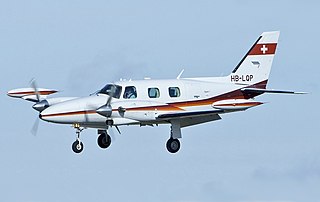
The Piper PA-31T Cheyenne is a turboprop development of the earlier PA-31P Pressurized Navajo.

The Lancair IV and IV-P are a family of four-seat, low-wing, retractable-gear, composite monoplanes powered by a 550 cubic inch Continental TSIO-550 twin-turbocharged piston engine.

The Beriev Be-30 is a Russian regional airliner and utility transport aircraft designed by the Beriev Design Bureau. It was developed specifically for Aeroflot local service routes using short, grass airstrips. It was also designed to be used in the light transport, aerial survey and air ambulance roles. It competed against the Antonov An-28 and the Czechoslovakian LET-410.
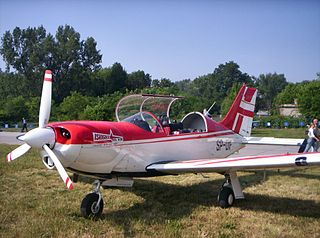
PZL M26 Iskierka or M26 Airwolf is a Polish trainer and aerobatic aircraft, designed at WSK PZL-Mielec.
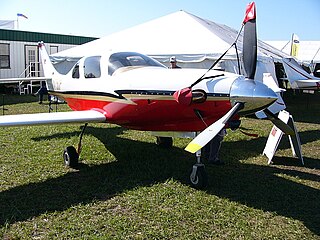
The Lancair Propjet is a four-seat, pressurized, composite aircraft powered by a 750-hp Walter M601E turboprop engine. The aircraft is based on Lancair's successful kit-plane, the Lancair IV. Like its piston-powered predecessor, the Propjet is noted for its performance, with a typical cruise speed of 325 knots at 24,000 feet and a climb performance of 4,000 feet per minute.

The Lancair Legacy, a modernized version of the Lancair 320, is a low-wing two-place retractable-gear composite monoplane, manufactured by the US company Lancair. It is available as a kit that cost US$71,500 in 2011. There is also a fixed-gear version, the Legacy FG. The retractable version of the Legacy cruises at 276 mph at 8,000 ft and the fixed gear version cruises at 215 mph.

The Fuji T-5 or KM-2Kai is a Japanese turboprop-driven primary trainer aircraft, which is a development of the earlier Fuji KM-2. The student and the instructor sit side-by-side.
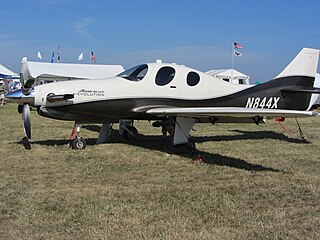
The Lancair Evolution is an American pressurized, low wing, four-place, single engine light aircraft, made from carbon fiber composite, developed by Lancair and supplied as an amateur-built kit by Evolution Aircraft.
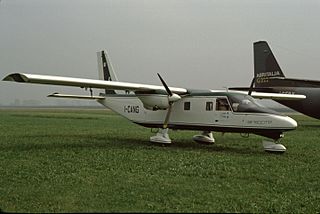
The Vulcanair SF.600 Canguro was a feederliner developed in Italy in the late 1970s. Despite a number of attempts to put the aircraft into series production, only a small number were ever built. The Canguro was a high-wing cantilever monoplane of conventional configuration with a fuselage of rectangular cross-section and a high-set tail. The tricycle undercarriage was not retractable, and its main units were carried on sponsons on the fuselage sides. SIAI Marchetti provided funding towards the construction of the prototype, and constructed this aircraft at the former Aviamilano plant. After flight testing proved positive, the type was put on sale, but failed to attract buyers in any number, even when the original piston engines were exchanged for turboprops and retractable undercarriage was offered as an option.
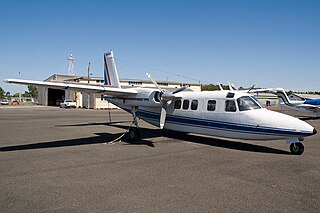
The Rockwell Commander 685 or Aero Commander 685 is a light-twin piston-engined aircraft with a pressurized cabin originally built by the Aero Commander company, a division of Rockwell International from 1965.
The Ultra-Leicht Flugtechnik Speedy Mouse is a German ultralight aircraft, designed and produced by Ultra-Leicht Flugtechnik of Braunschweig. The aircraft is supplied as a complete ready-to-fly-aircraft.
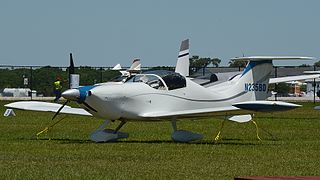
The Alvarez Polliwagen is a 1970s homebuilt aircraft. The aircraft has a combination of many high performance features not typically found in a Volkswagen air-cooled engine-powered homebuilt.
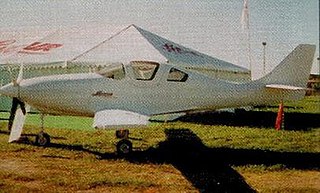
The Lancair Tigress was an American homebuilt aircraft that was designed by Lance Neibauer and intended for production by Lancair of Redmond, Oregon. Introduced in mid-late 1990s, it was essentially a Lancair IV with a much more powerful engine. When the engine was cancelled just as it was entering production, the Tigress project ended with it. Only prototypes were produced.
The Starfire Firebolt, sometimes called the Starfire Firebolt Convertible, due to its removable canopy, is an American homebuilt aerobatic biplane that was designed by G. H. "Mac" McKenzie and produced by Starfire Aviation of Tempe, Arizona. When it was available the aircraft was supplied in the form of plans for amateur construction, with some pre-fabricated parts available.
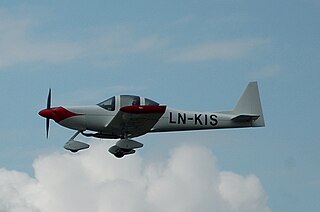
The Tri-R KIS TR-1 is an American homebuilt aircraft that was designed by Rich Trickel and produced by Tri-R Technologies of Oxnard, California, introduced in the 1990s. When it was available the aircraft was supplied as a kit for amateur construction.

The TeST TST-5 Variant is a Czech homebuilt aircraft that was designed and produced by TeST Gliders of Brno, introduced c. 1998. When it was available the aircraft was supplied as a completely assembled aircraft, without engine or instruments, and also as a kit for amateur construction.
The Lancair Barracuda is an American amateur-built aircraft produced by Lancair of Uvalde, Texas. It was introduced at AirVenture in July 2018. The aircraft is supplied as a kit for amateur construction.

The Lancair 200 and Lancair 235 are a family of American amateur-built aircraft that were designed by Lance Neibauer and produced by his company, Lancair of Redmond, Oregon. The Lancair 200 was initially called the Lancer 200, but the name was changed due to a naming conflict. It was first shown at AirVenture in Oshkosh, Wisconsin in July 1985. Now out of production, when it was available the aircraft was supplied as a kit, for amateur construction.
The Zenair CH 180 Super Acro-Z is an aerobatic light aircraft, that was designed by Chris Heintz and built by Zenair in the 1980s.
References
- 1 2 3 4 "Lancair Flies New 'Sentry' Turbo-Prop - Aero-News Network". www.aero-news.net. Retrieved 10 April 2019.
- 1 2 "Home". Whiplash Aero. Retrieved 10 April 2019.
- 1 2 3 "Lancair aims Sentry racer at military market". Flightglobal.com. 1 October 2002. Retrieved 10 April 2019.
- 1 2 3 4 5 "Lancair Sentry". www.pilotfriend.com. Retrieved 10 April 2019.
- 1 2 "LANCAIR Sentry 4T - SKYbrary Aviation Safety". www.skybrary.aero. Retrieved 10 April 2019.
- ↑ Lednicer, David (2010). "The Incomplete Guide to Airfoil Usage" . Retrieved 9 April 2019.